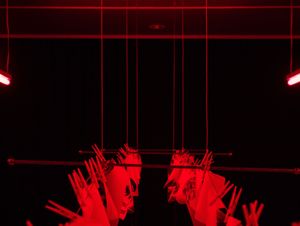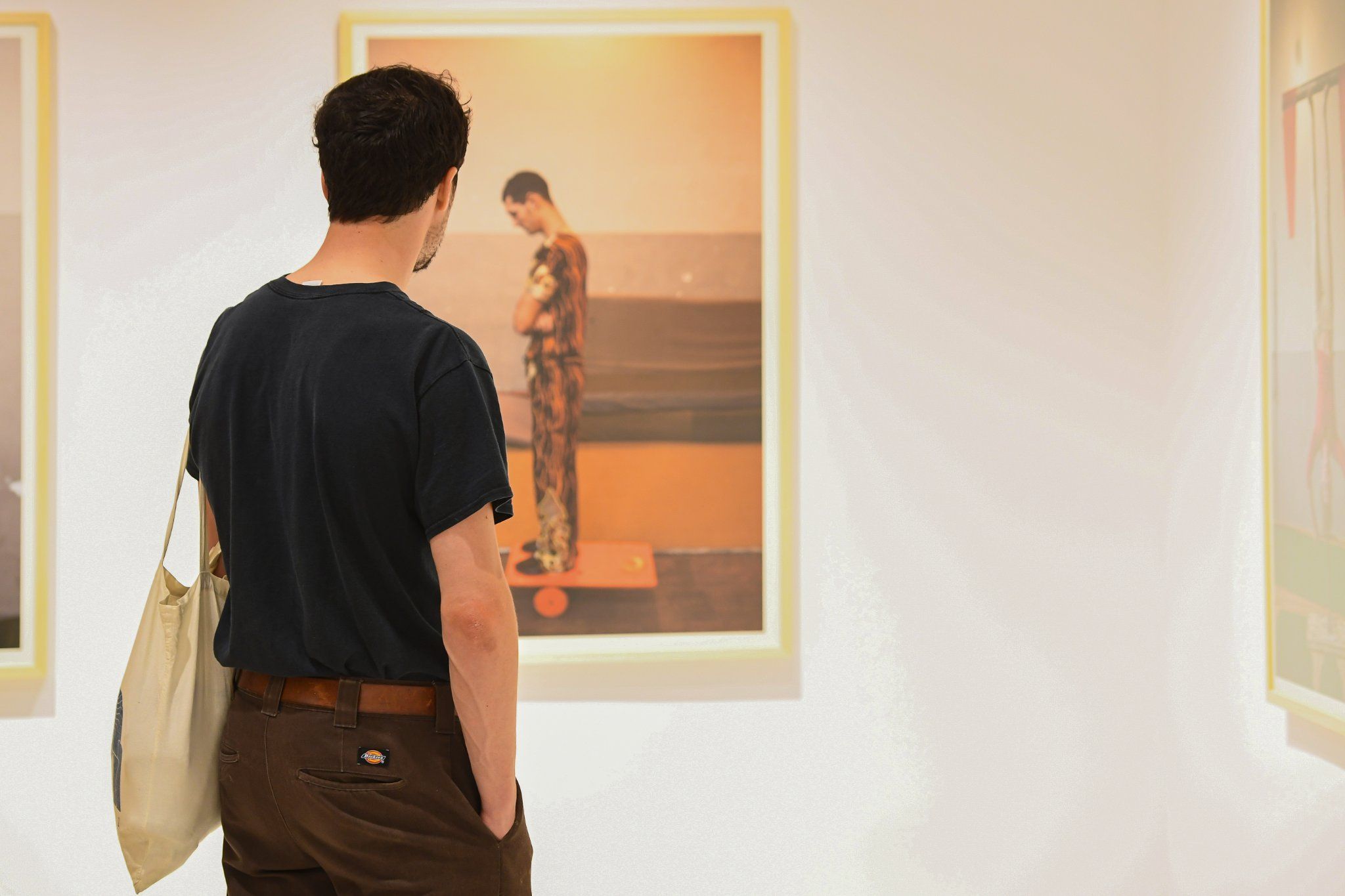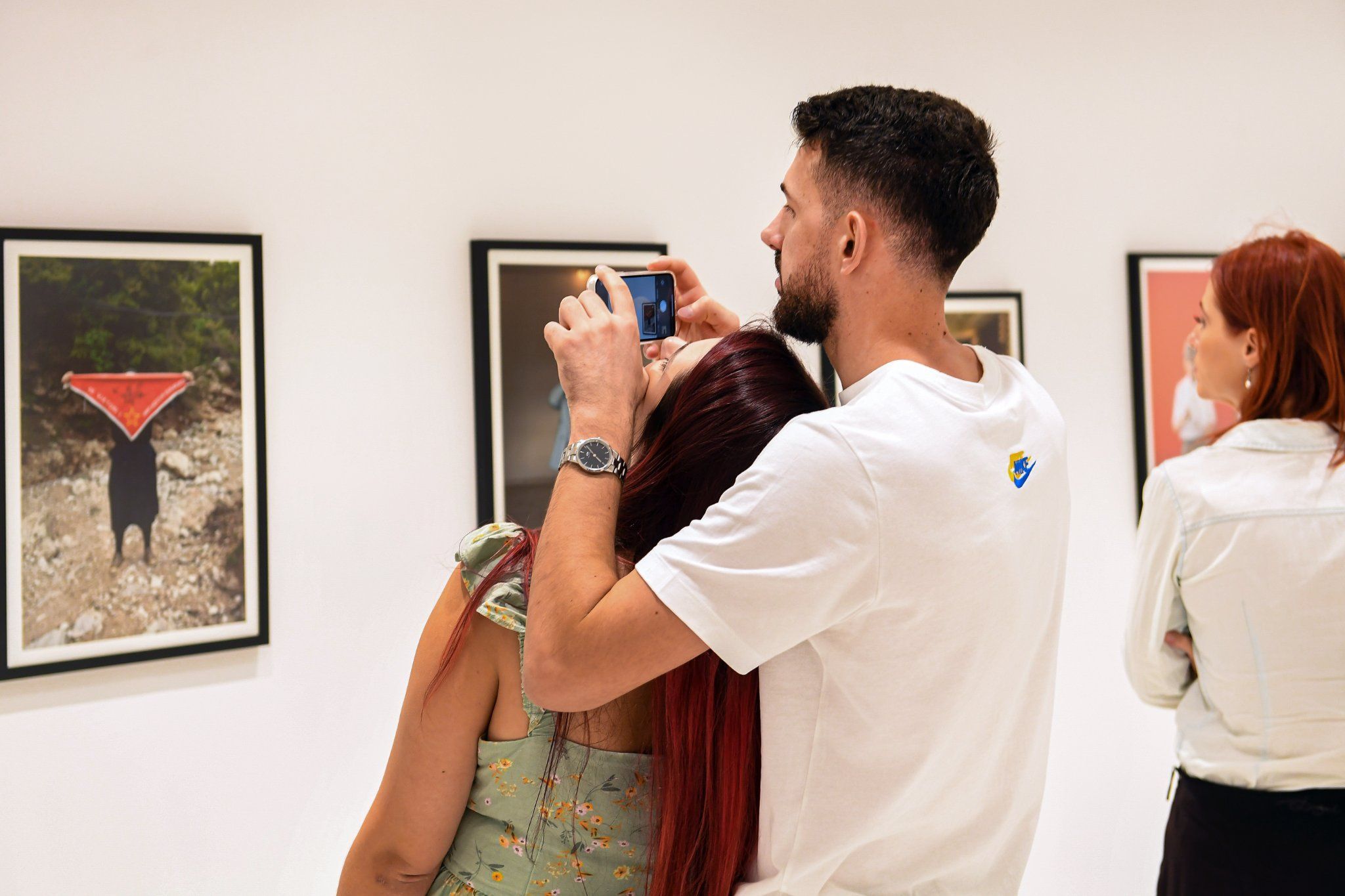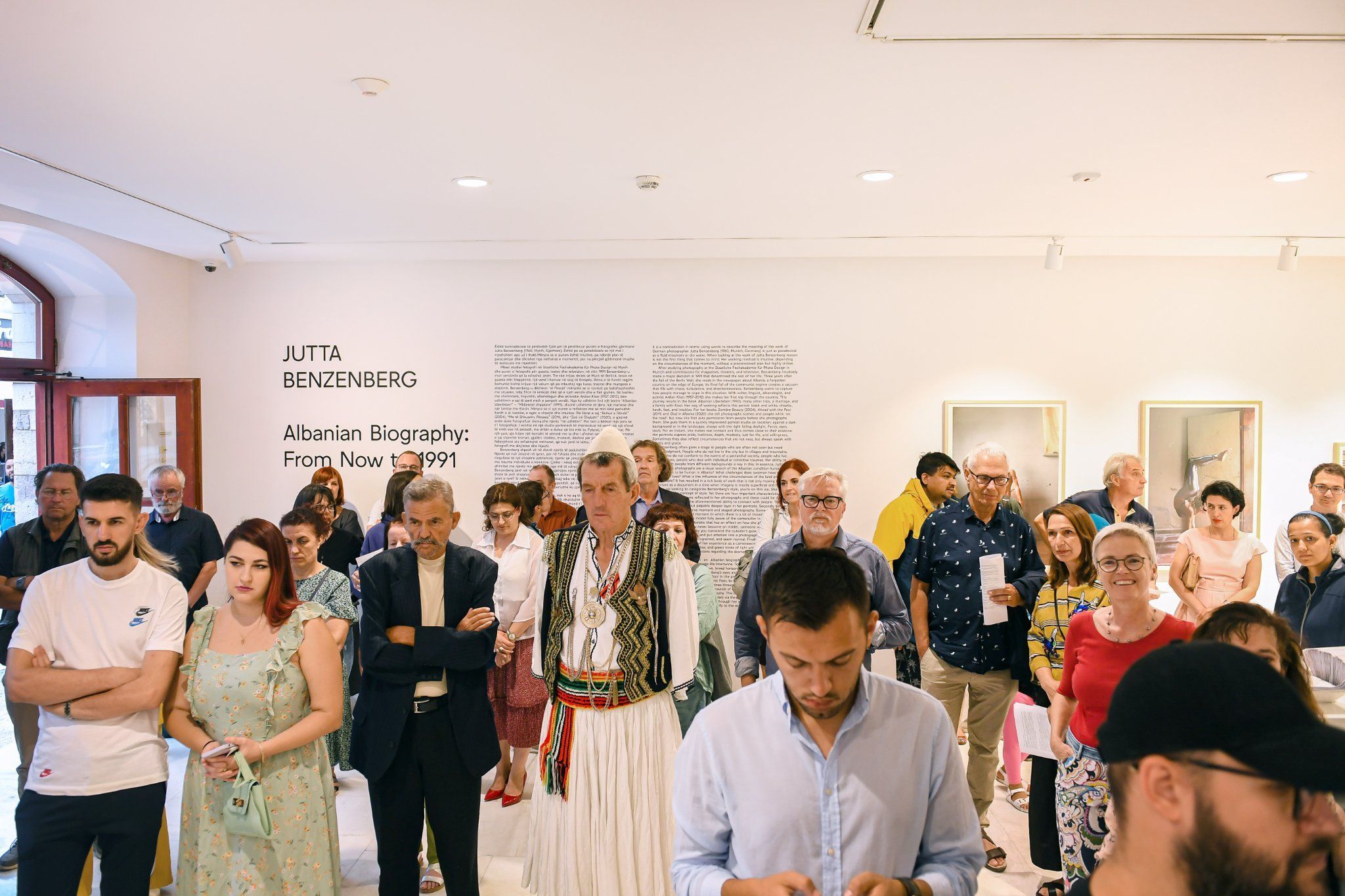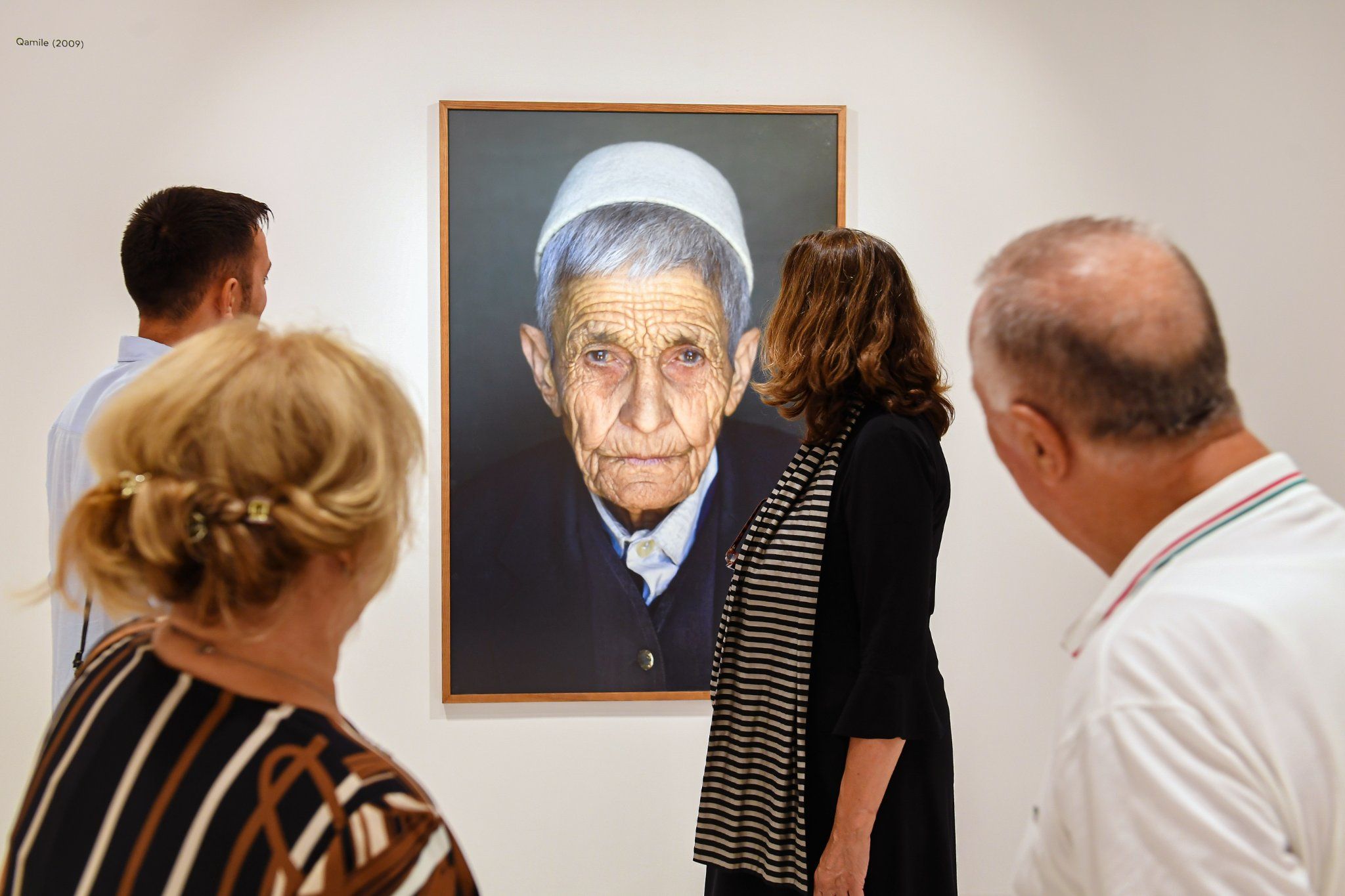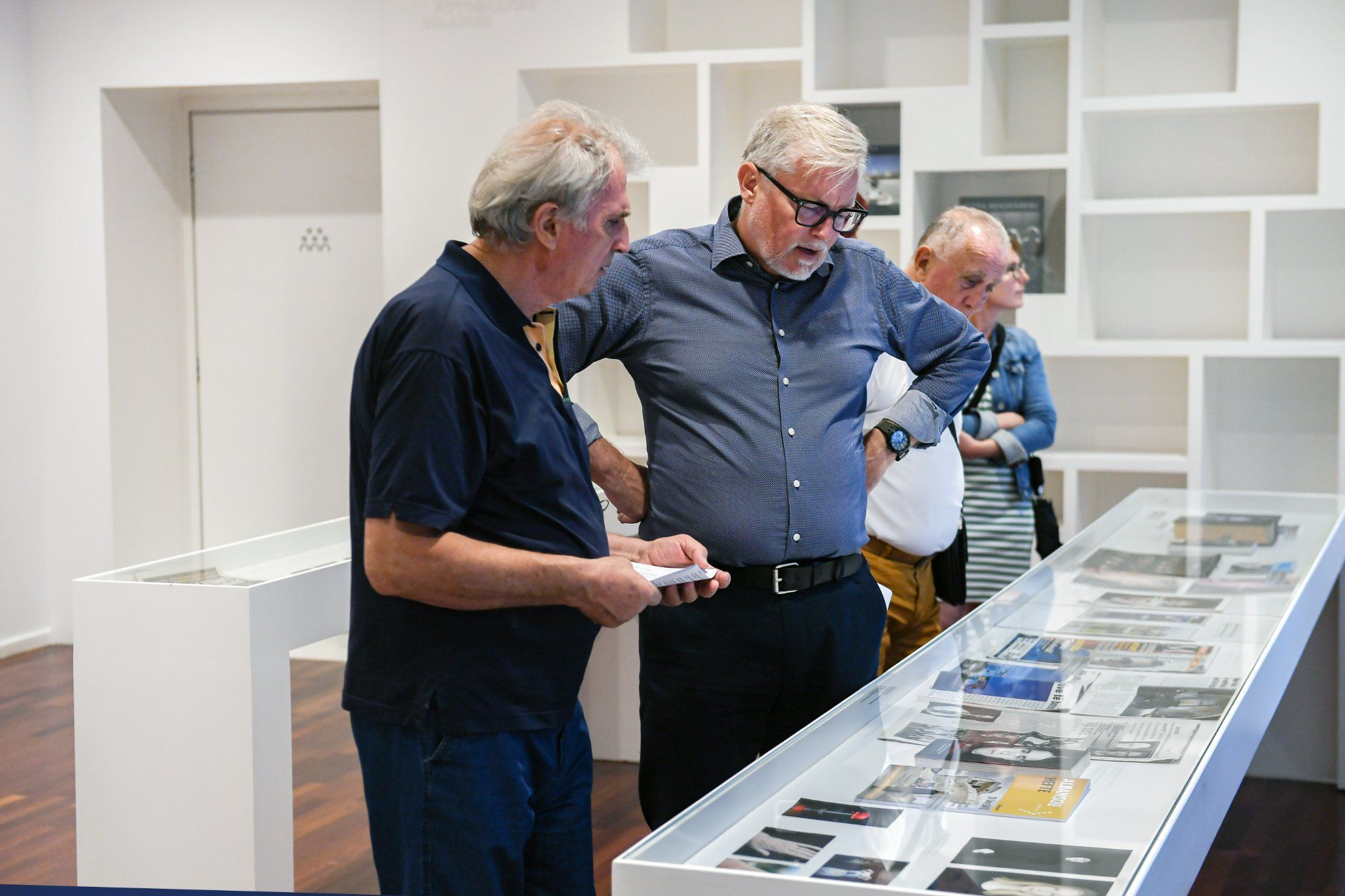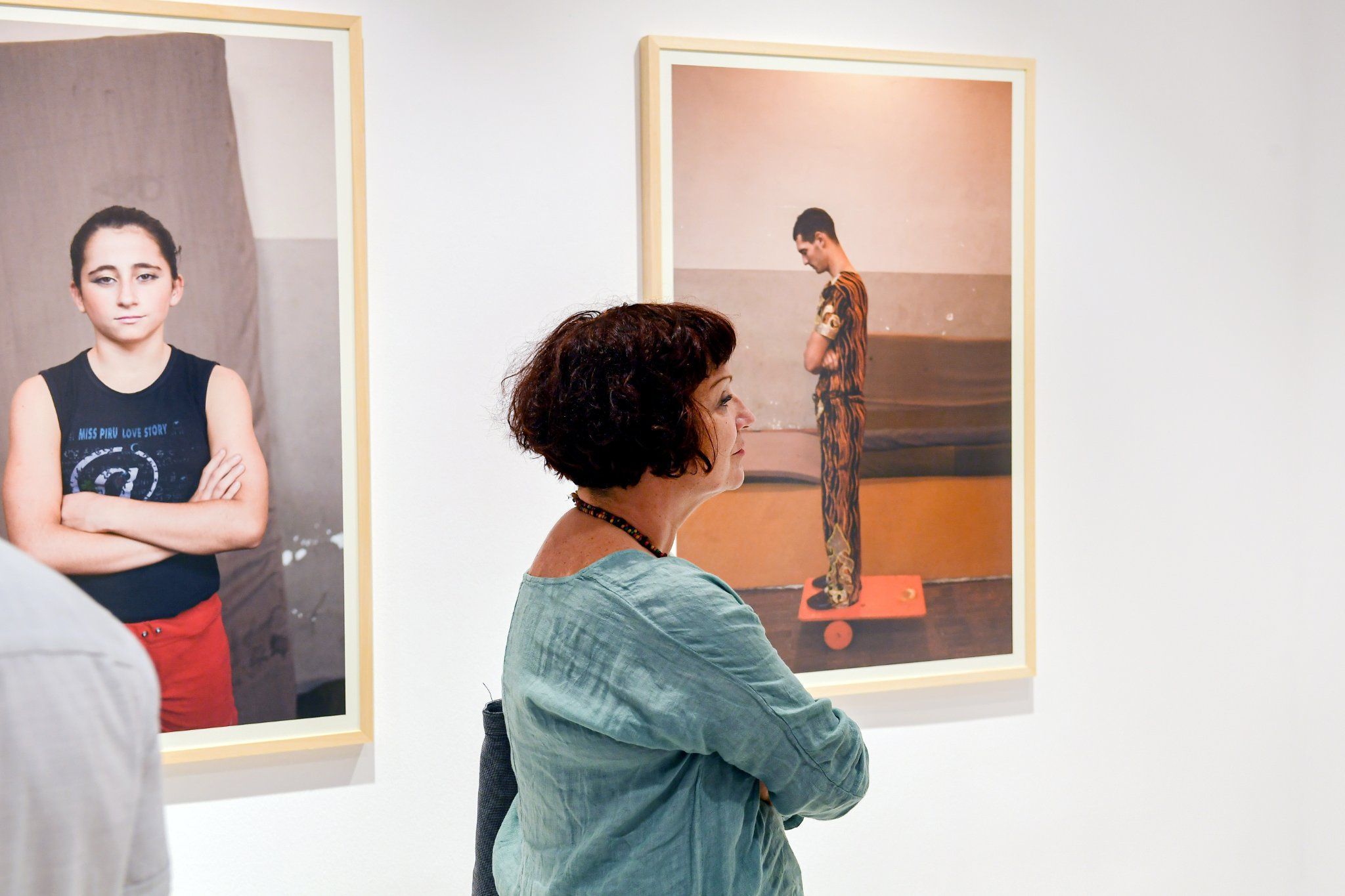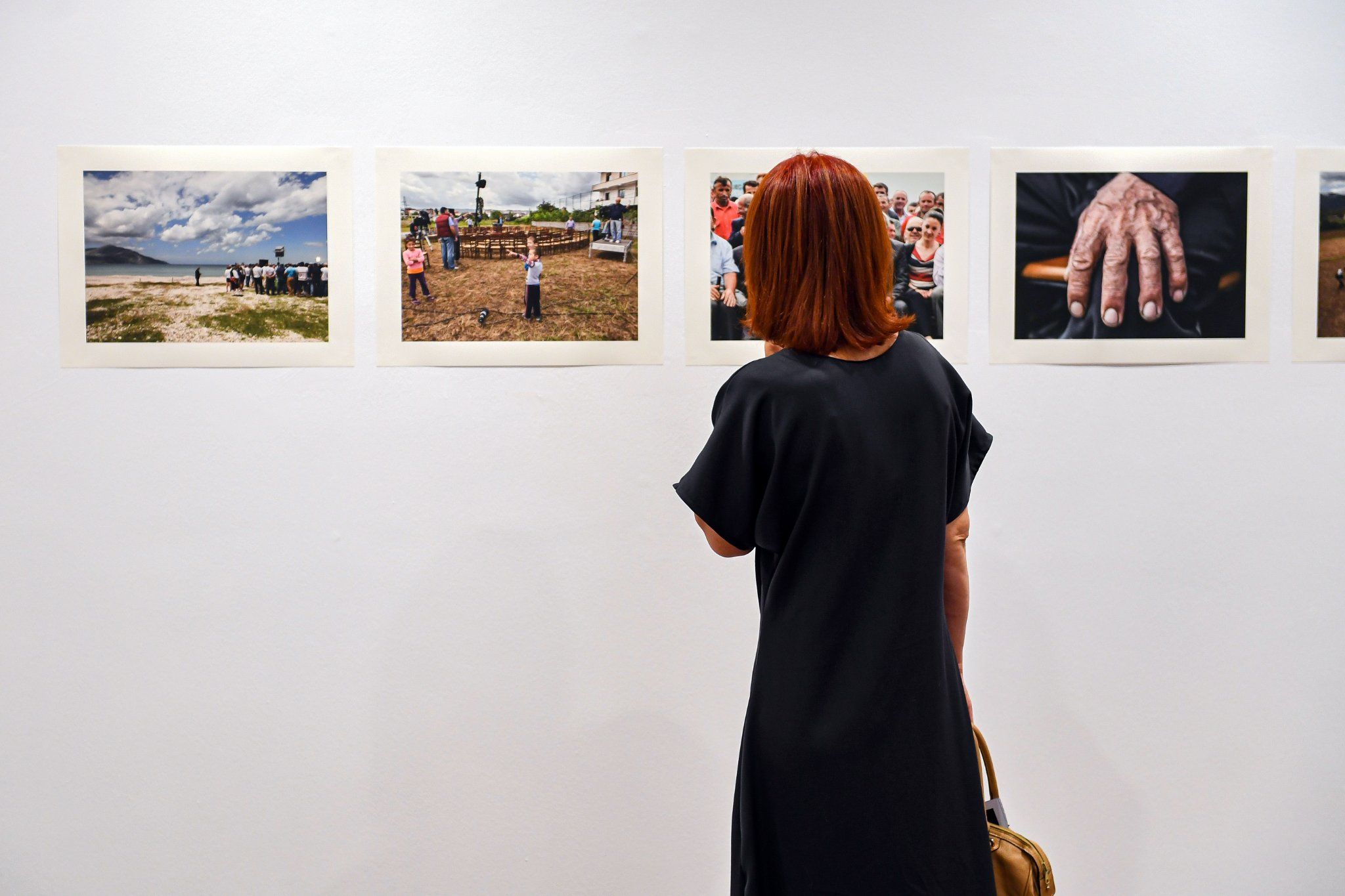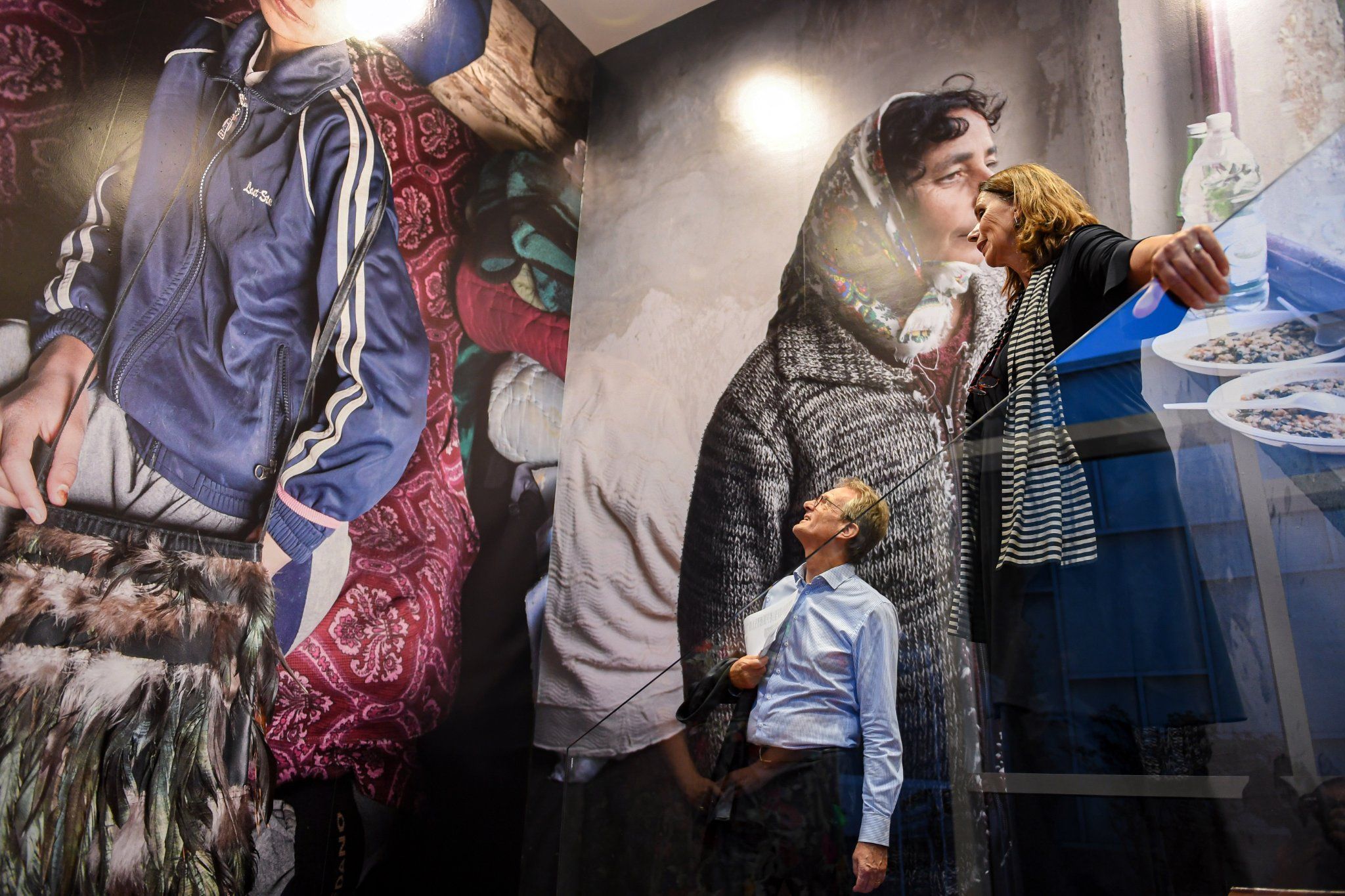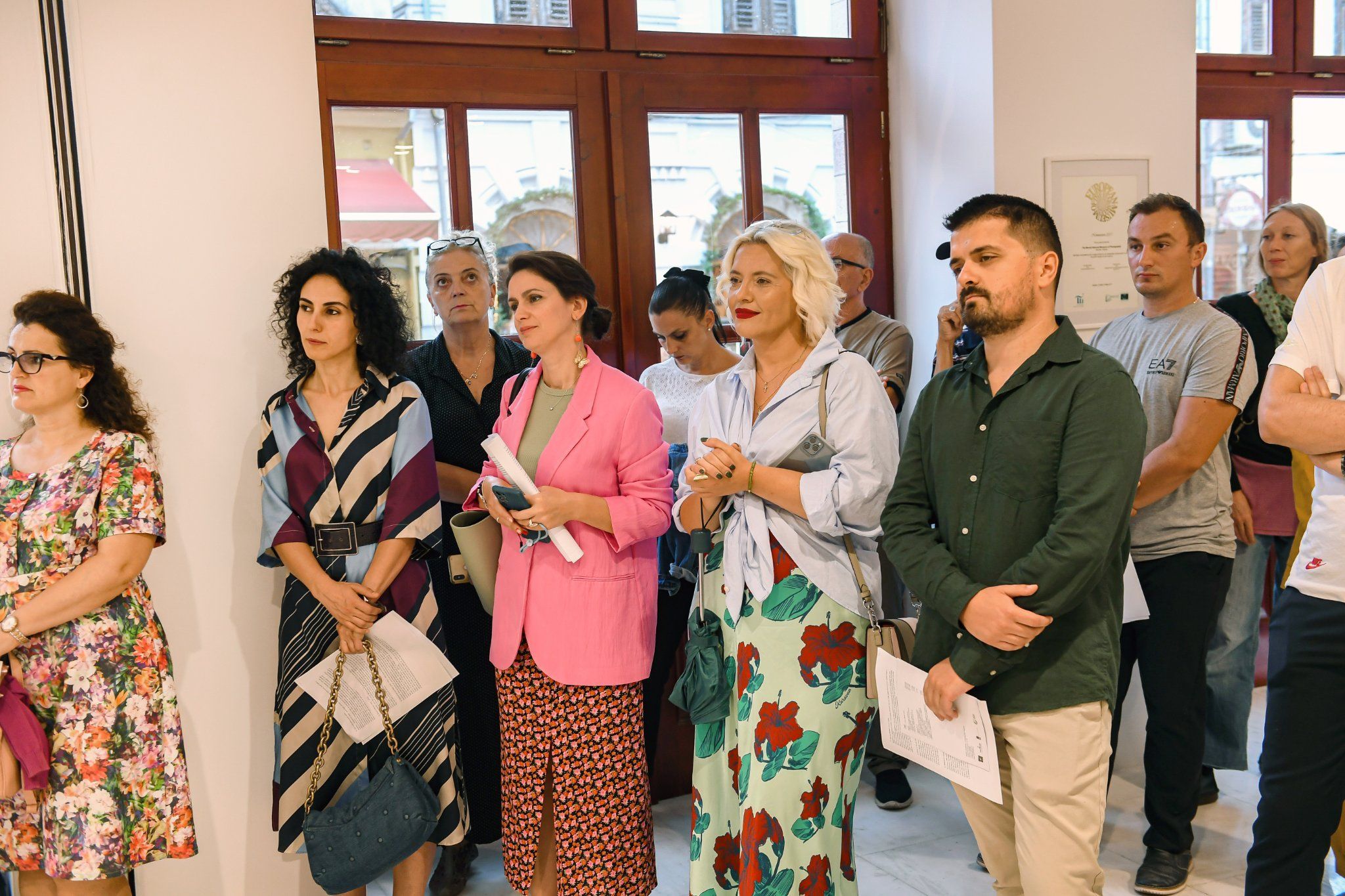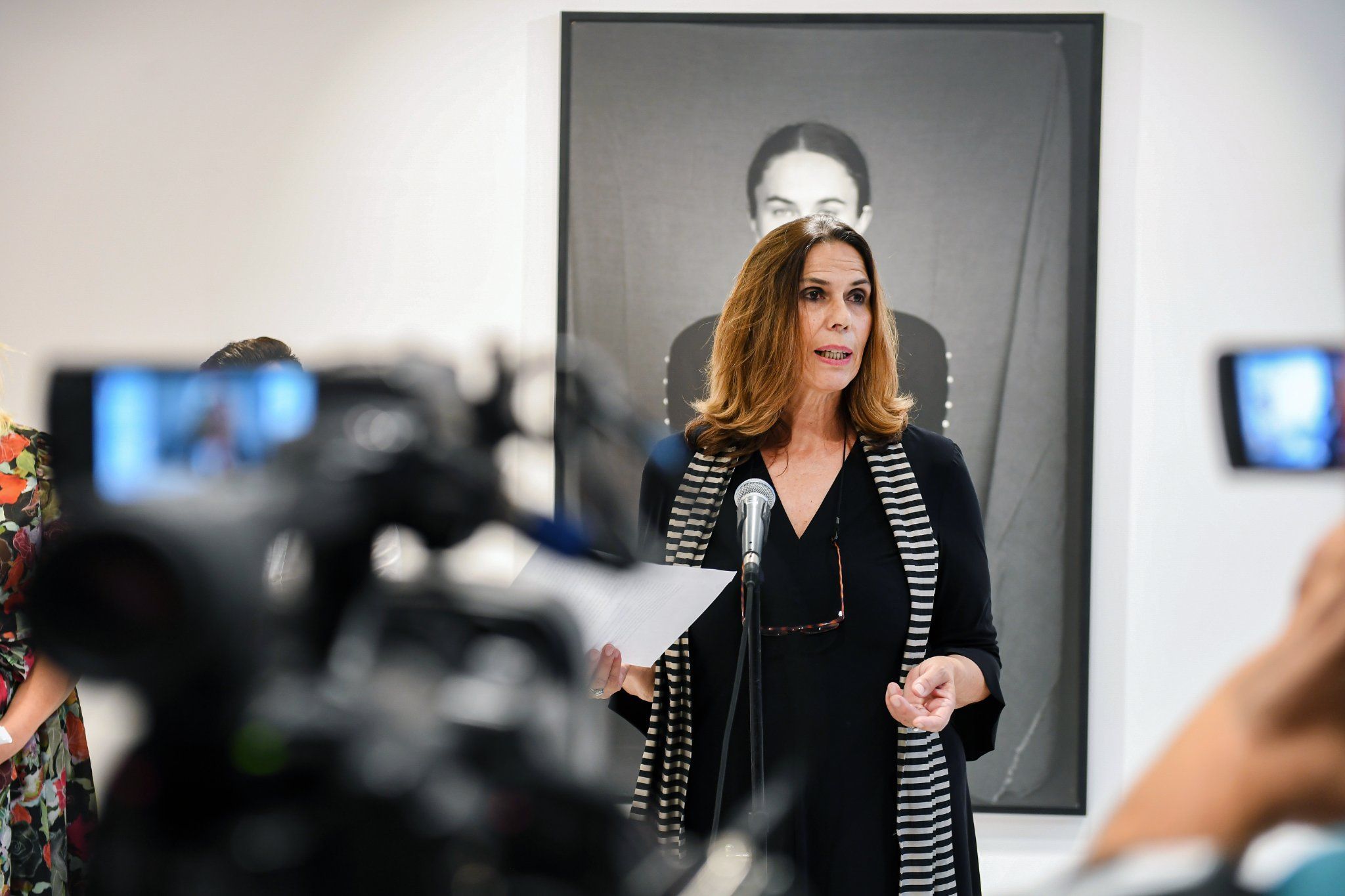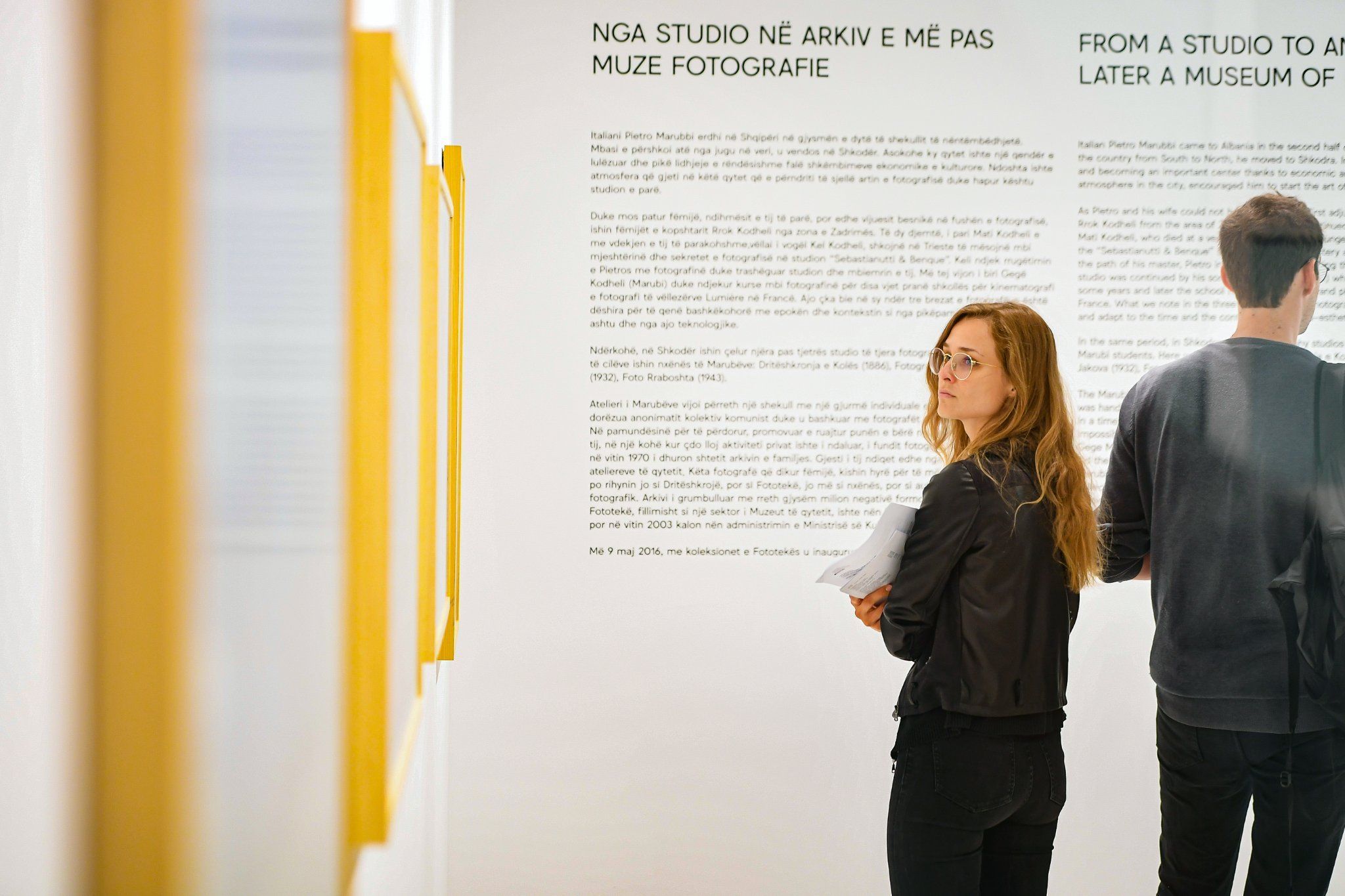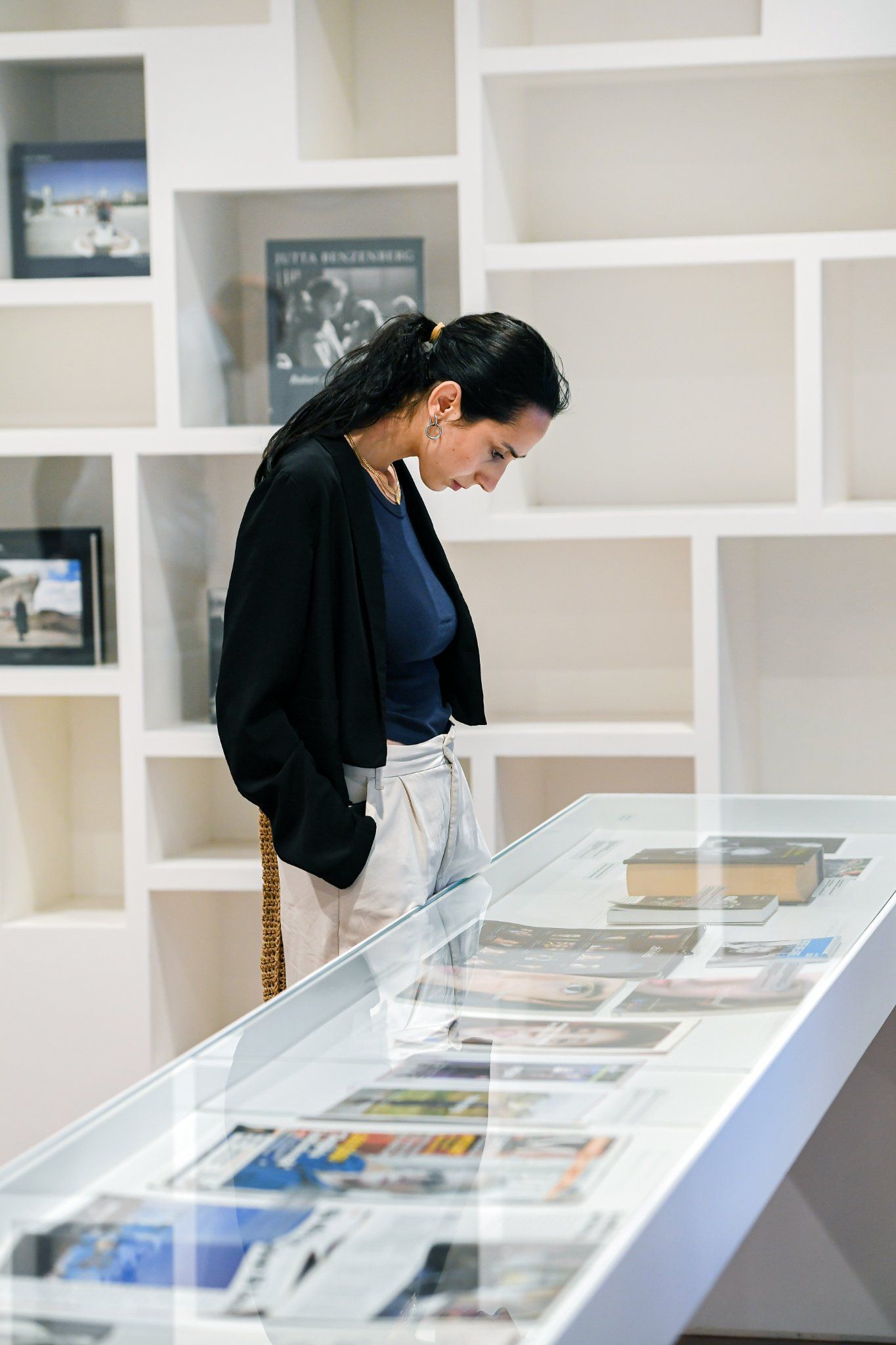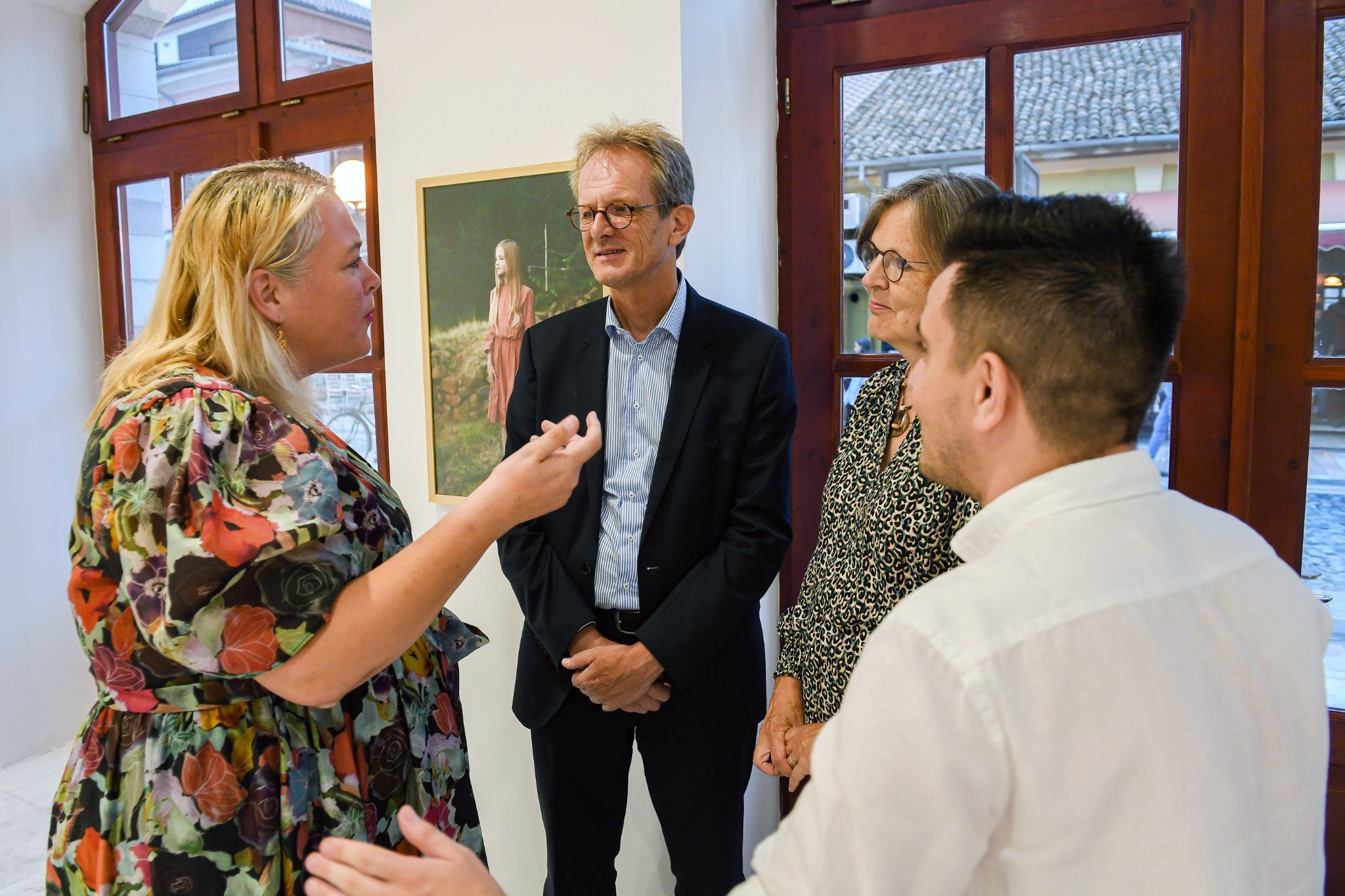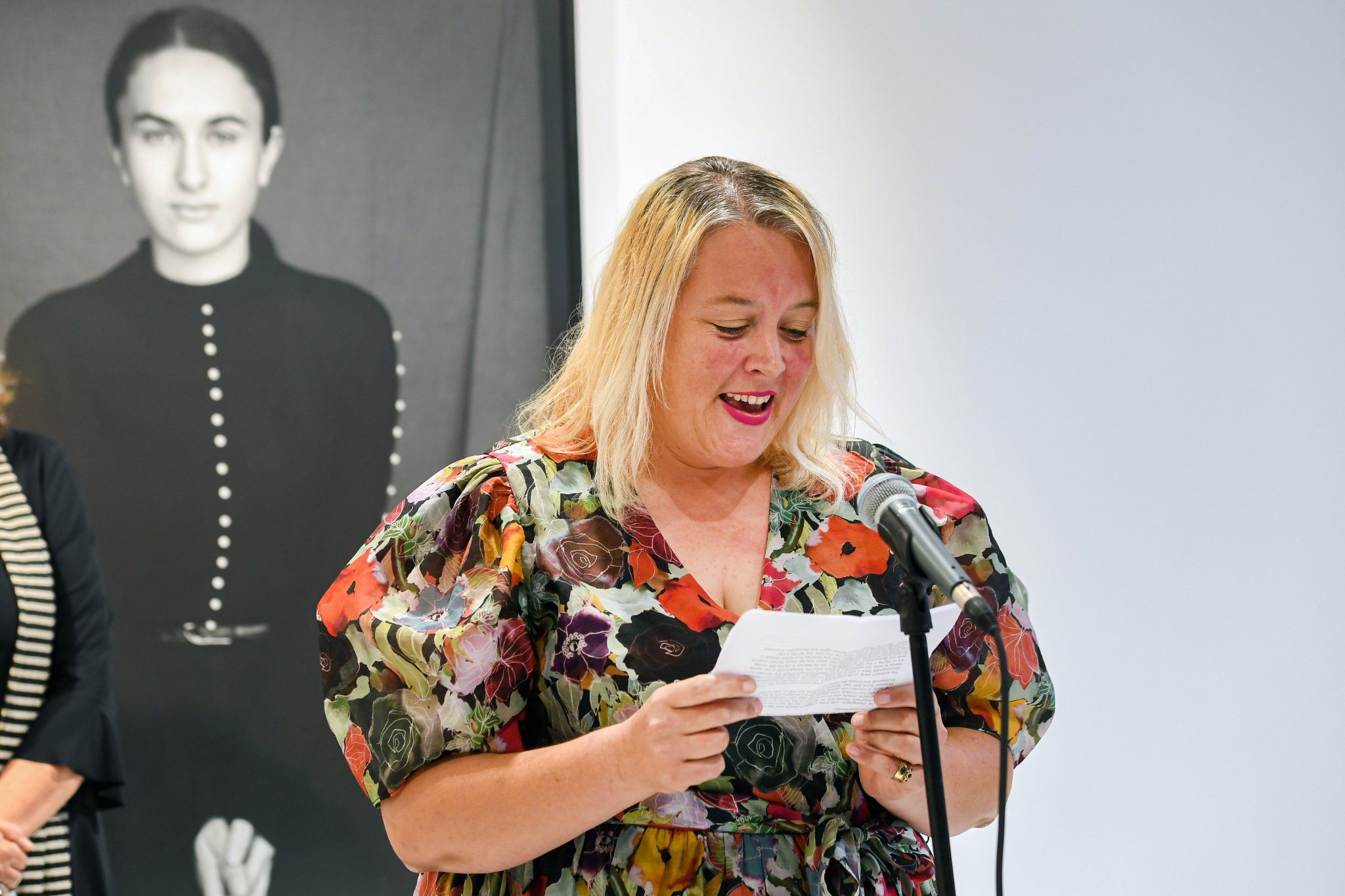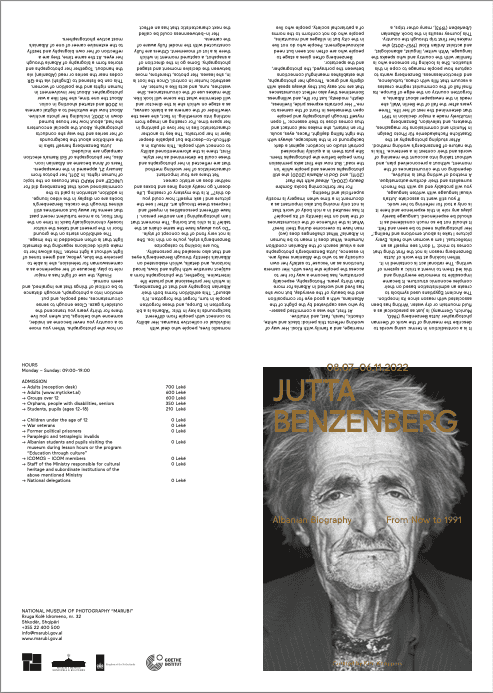Jutta Benzenberg
Albanian Biography From Now to 1991
–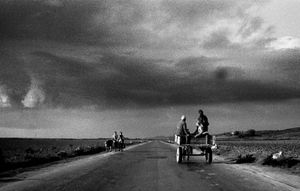
It is a contradiction in terms: using words to describe the meaning of the work of German photographer Jutta Benzenberg (1960, Munich, Germany) is just as paradoxical as a fluid mountain or dry water. When looking at the work of Jutta Benzenberg reason is not the first thing that comes to mind. Her working method is intuitive, depending on the circumstances of the moment, without a preconceived plan but highly skilled.
After studying photography at the Staatliche Fachakademie für Photo Design in Munich and commissions for magazines, theaters, and television, Benzenberg intuitively made a major decision in 1991 that determined the rest of her life. Three years after the fall of the Berlin Wall, she reads in the newspaper about Albania, a forgotten country on the edge of Europe. Its final fall of the communist regime creates a vacuum that fills with chaos, turbulence, and directionlessness. Benzenberg wants to capture how people manage to cope in this situation. With writer, linguist, albanologist, and activist Ardian Klosi (1957-2012) she makes her first trip through the country. This journey results in the book Albanian Uberleben (1993), many other trips, a marriage, and a family with Klosi. Her way of working reflects this period: black and white, chaotic, harsh, fast, and intuitive. For her books Sombre Beauty (2004), Ahead with the Past (2011) and God in Albania (2020) she still photographs scenes and people while 'on the road'. But now she first asks permission from people before she photographs them. She puts them in a quickly improvised portrait studio on location: against a dark background or in the landscape, always with the right falling daylight. Faces, eyes, souls. For an instant, she makes real contact and thus comes close to their essence. Her portraits express pride, liveliness, depth, modesty, lust for life, and willingness. Sometimes they also reflect circumstances that are not easy, but always speak with dignity and grace.
Benzenberg often gives a stage to people who are often not seen but need acknowledgment. People who do not live in the city but in villages and mountains, people who do not conform to the norms of a patriarchal society, people who live nomadic lives, people who deal with individual or collective traumas. Her ability to connect with people from different backgrounds is key in this. In essence, Jutta Benzenberg's photographs are a visual search of the Albanian condition humaine. What does it mean to be human in Albania? What challenges does (wo)man have to overcome during their lives? What is the influence of the circumstances of the land on the identity of its people? It has resulted in a rich body of work that is not only moving but also important as a document in a time when imagery is mostly superficial and fleeting.
You are looking to categorize Benzenberg's style, you're on thin ice. She is not very fond of the concept of style. Yet there are four important characteristics of her working method that are reflected in her photographs and these could be determined as hers. First, there is the aforementioned ability to connect with people. This results in a difficult-to-describe but palpable deeper layer in her portraits. Secondly her photos move between the decisive moment and staged photography. Some go in the direction of a snapshot, a captured moment in which there is a lot of movement. Others are fully constructed with the model fully aware of the camera.Her in-betweenness could be called the next characteristic that has an effect on how she photographs. When you move to a country you never become an insider, someone who belongs, but when you live there for thirty years you transcend the outsider's gaze. Close enough to sense circumstances, read people, and put emotion into a photograph, enough distance to be critical of things that are ingrained, and seem normal. Finally, the use of light has a major role to play. Because of her experience as a camerawoman for television, she is able to perceive the blue, yellow, and green tones of light without a light meter. This allows her to make quick decisions regarding the dramatic light that is often embedded in the image.
This exhibition forms both their Albanian biography and that of Benzenberg, in which her professional and private life intertwine. Together, the photographs form a subject narrative with highs and lows, broad horizons, and details, which elaborated on Albania's identity through Benzenberg's eyes and that also revealed her personality. The exhibition starts on the ground floor in the present and takes the visitor loosely chronologically back in time on the first floor, to a more turbulent recent past that seems far away but sometimes still shines through the cracks. Jutta Benzenberg herself talks in the exhibition about the backgrounds of her series, the special encounters she had and the way she conducts photography. This can be listened to (English) via the QR codes near the series or read (Albanian) via the handout. Together her photographs and stories form a biography of Albania through her eyes. At the same time, they are a reflection of her own biography and testify to the extensive career of one of Albania's most active photographers.
Exhibition Credits
- Curated by
Kim Knoppers
- Supported by
Ministry of Culture of Albania
Goethe-Zentrum Tirana
Embassy of the Netherlands in Tirana - Audio storytelling
Jutta Benzenberg
Kim Knoppers - Supported by
Ministry of Culture of Albania
Goethe-Zentrum Tirana
Embassy of the Netherlands in Tirana - Audio storytelling
Jutta Benzenberg
Kim Knoppers
